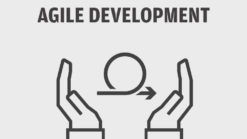Course Overview:
This seminar focuses on the uncertainty that surrounds any project. Project Risk Management is designed to have the participant learn core project risk management concepts and best practices, and learn tools that are used to proactively manage project risk. During the course, “best practices” will be introduced, and put into context through various exercises and scenarios and case studies.
Target Audience:
Students enrolling in this course should be planning to lead a project (primary audience) or serve on a project team (secondary audience)
Pre-requisites:
To ensure your success, we recommend you have some working knowledge or experience in working in a project environment, or have completed a foundations course in project management.
Course Duration:
- 14 hours (2 Days)
Course Content:
Introduction to Project Risk Management
- Course Objectives
- Session Overview
- Class Materials
- Student Introductions
Project Risk Management Project
- Risk Definition
- Risk Impacts
- Risk Events and
- Risk Conditions
- Risk Management vs. Issues Management
- Why Manage Risks?
- What Happens if you don’t Manage Risks?
- Exercise – Identify typical project risks
- Practical Risk Management Guidelines
- Underlying PM Concept
- Project Constraints
- Project Objectives
- Managing Uncertainty
- Project Manager’s Role in Risk Management
- Team Member Roles
- Risk Management – A Structured Approach
- Tailoring Risk Management
- PMBOK® Guide Project Risks Management Processes
- Sample Project – Case Study
Plan Risk Management
- Risk Management – A Structured Approach – Step 1
- Project Subsidiary Management Plans
- Components of a Risk Management Plan
- Risk Tolerance
- Risk Management Planning Meeting
- Risk Categories
- The Risk Breakdown Structure
- Exercise- Develop a Risk Breakdown Structure
- Meeting Guidelines
- Exercise- Risk Management Planning Meeting
Identify Risks
- Risk Management –
- A Structured Approach – Step 2
- Identify Risks
- Process Approach to Risk Management
- Identify Risks tools and techniques
- Brainstorming
- Crawford Slip Adaptation
- Risk Characteristics
- Project
Risk Assessment
- Why Assess and Rank Risks?
- Risk Management – A Structured Approach – Step 3
- Risk Assessment
- Frequency or Risk Assessments
- Perform Qualitative
- Risk Analysis
- Risk Probability of Occurrence
- Risk Impacts to Project Objectives
- Which Type of Assessment
- Using the Risk Characteristics in Assessment
- Perform Qualitative
- Risk Analysis Tools and Techniques Scales of Probability Scale of Impact Using a Probability Impact Grid (PIG) Assessing Risk using a PIG
- Exercise – Assess Project
- Risks using a PIG
- Risk Assessment Changes over Time Perform Quantitative
- Risk Analysis Using Statistics to Forecast Perform Quantitative
- Risk Analysis Tools and Techniques Sensitivity Analysis Expected Monetary Value (EMV) Analysis Decision-Tree Analysis
- Decision-making Steps Decision Tree Example Evaluating a
- Decision Tree Exercise – Perform a
- Decision-Tree Analysis Monte Carlo Simulation Demo –
- Monte Carlo Simulation
Plan Risk Responses
- Risk Management – A Structured Approach – Step 4
- Risk Response goals Using the Risk Characteristics in
- Risk Response Planning Plan
- Risk Responses Tools and Techniques Responses for Threats Avoid the
- Risk Transfer the risk Mitigate the
- Risk Mitigation Guidelines Acceptance as a response Responses for Opportunities Exploit the risk Share the
- Risk Enhance the risk
- Risk Triggers Residual
- Risks Secondary Risks Contingency Reserves Contingency Reserves vs. Management Reserves Developing the
- Risk Response Plan Exercise –
- Develop a Risk Response Plan
Control Risks
- Control Risks
- Risk Management – A Structured Approach – Steps 5 & 6
- Monitoring
- Risks Using the
- Risk Characteristics in Control
- Risks Controlling Risks Control
- Risks Tools and Techniques
- Risk Audits Variance and Trend Analysis Reserve Analysis Status Meetings Tracking and Reporting on project risk Outputs of Control
- Risks Exercise – Perform a Risk Re-Assessment
Continuous Improvement
- Lessons Learned
- Risk Management – A Structured Approach – Step7 Improving the
- Risk Management Plan Project Issues Issues Management Issues Management Plan Process Flow for Issues Management Issues Management Best Practices Capstone Exercise – Perform
- Risk Management Activities on a short case study Course Summary Course Revie
Course Customization Options
To request a customized training for this course, please contact us to arrange.













